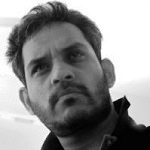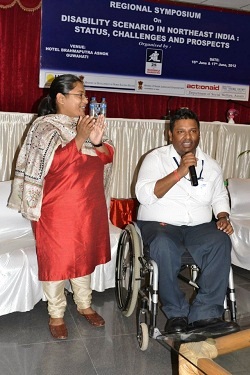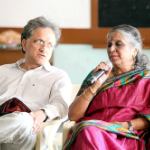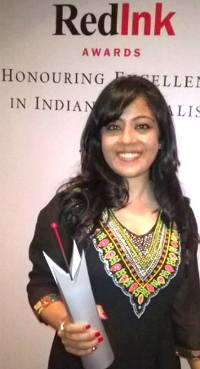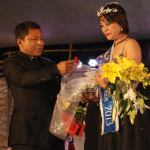Being a collector is about being obsessive. In me, that trait can't be called mild.
From as far back as I can remember, I have always collected something or the other. My mother tells me that as a child, I stood at the bus-stop outside my building waiting for passengers to alight so I could ask them for their tickets, which I then collected. I must have been 8 or 9 years old then.
My father's old brief-case was where I stored my nuts and bolts for a long time. For years, I walked to school and back, scanning the road for another nut or bolt to add to my collection. Priding myself on the range of sizes I had, I spent many an afternoon cleaning and polishing them with kerosene.
I had conventional collections too - stamps and coins, a staple those days. Collectors have phases of waxing and waning enthusiasm; I abandoned old collections and moved on to Batman comics, special issues of magazines, photo books in general, photo books specifically on the theme of cities and masks (I had to stop as I have no wall space left at home) depending on age, peer influences or simple lunacy.
Visitors to my home have often asked me why I collect Gandhi figurines. I do not know if there is a clear answer. But I think that for Indians of my age, there really were two Gandhi moments in our growing years: the first was Sir Richard Attenborough's Oscar-winning film in 1982. Our school took us to watch the film, like many other schools. India appropriated Ben Kingsley as fully Indian. The second was that scene from the 1994 film English, August by Dev Benegal based on Upamanyu Chatterjee's book. In that film there was a scene with a statue of Gandhi propped up with a stick in its posterior to prevent it from toppling. I still remember loud laughter in that dark auditorium and a series of jokes that did the rounds then. These moments have stayed with me.
But it was during my days as a travel photographer, as I sat in a car looking out at the aesthetic nightmare that is small-town India, that I started noticing the statuary that populates our landscapes: Dr Ambedkar in his blue suit, clasping the Constitution of India, Indira Gandhi busts, Bose and Tagore in the East, Shivaji on his horse around here in Maharashtra, MGR with his dark glasses, a rare Jawaharlal, and of course many, many Gandhis. The variety is staggering. I have photographed a few of these. My fascination began then and lingered. Somewhere in my heart a collector's interest was piqued... the beginning of another vague obsession that stayed dormant for many years, lacking focus perhaps about how to give it form.
I met Naresh Fernandes who has an enviable collection of political memorabilia from around the world. There was Mao and Che, Saddam Hussein and George Bush, Gandhi, Tagore, Nehru, Shivaji, Osama, Tilak, Dr Ambedkar, Mother Teresa, Vivekananda and many others. I wonder if he got a Benazir Bhutto from his recent visit to Pakistan! They were arranged neatly on his book-shelf or hanging on the walls. He even had a large printed Gandhi that covered his TV!
At this point, I must mention another trait of collectors - competitiveness. I had to be one-up on my friend! And that's when I came across my first Gandhi bust in Kolkata. One led to the other, and I found a rough plaster one in a seated position at the Gandhi Museum in Patna. Naresh gave me one made of twisted wire that he found outside the Jehangir Art Gallery in Bombay. A few friends kept a look out and, with time, my parents, a student, that student's maid, my aunt and my sister led me to others.
My collection has its origins in Kolkata, Krishna Nagar, Delhi, Patna, Bombay, Goa and Bangalore. My aunt discovered a rare one at the back of a cupboard full of curios that belonged to her mother-in-law. It is possibly from pre-Independence as it shows Gandhi, standing on a globe that has the map of unified India and holding the Indian tri-colour, with a charkha instead of the Ashok Chakra - then the flag of the Indian National Congress.
My personal search for them has been quite interesting. It has taken me to many a state handicrafts emporium. In Kolkata, at Dakshinapan, as I walked from one store to the other, I met with amused sales staff. A woman did not know Gandhi and said they did not have any statues, but I spotted one made of brass right behind her head, sitting between a crowd of laughing Buddhas and Ganeshas. Another asked a colleague in confusion - I had to show them a bank-note to clarify. In a third shop, they informed that statues of Sonia Gandhi weren't available!
Another time, when I had almost given up for the day, a helpful shopkeeper pulled out a Chinese-made plastic one saying, "See, if this is Gandhi". It was! And with almond eyes and neat, thin, arched eyebrows worthy a fashion model.
So it continues...till I have space on the table, or a fresh madness lurking around the corner claims me.
Find us on facebook: facebook.com/TheThumbPrintMag

